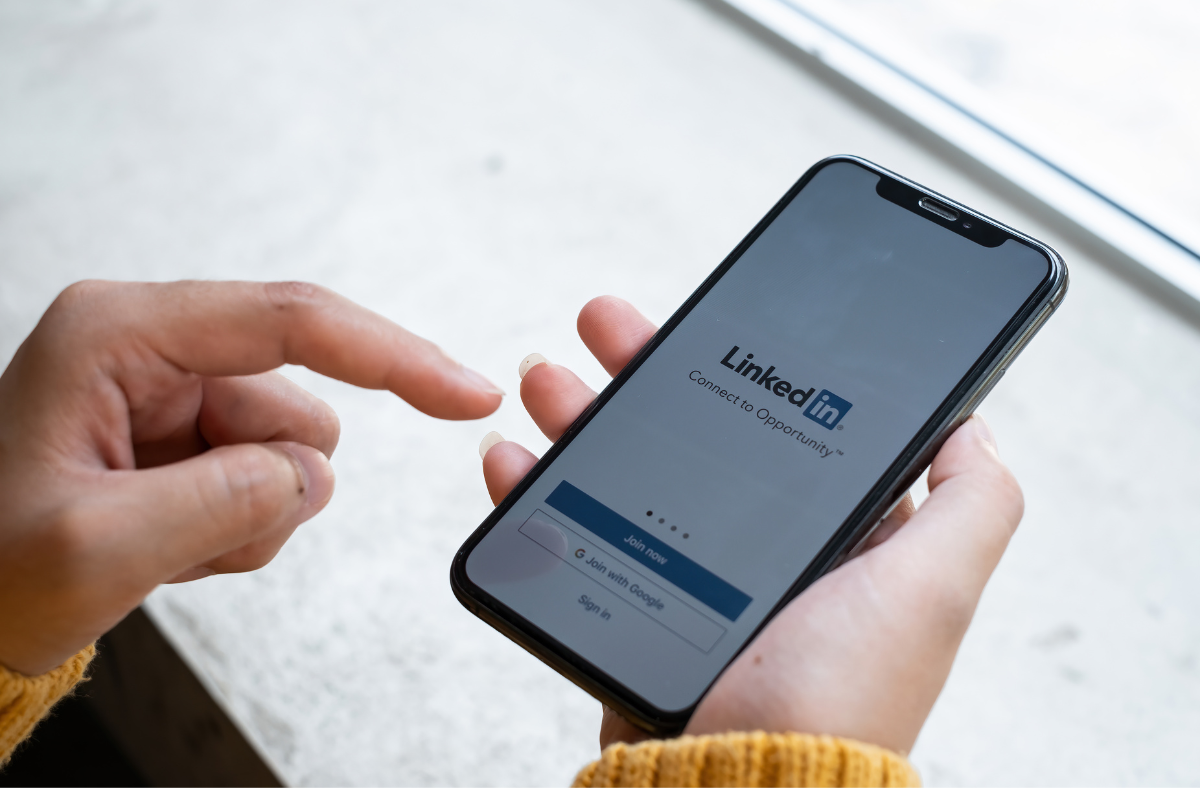How to Use LinkedIn to Build Your Business
LinkedIn is a powerful tool for marketing your business and connecting with potential customers, clients, partners, and employees. But, beyond simply posting your news and updates, how do you effectively use it in building your brand strategy? Here are some ways to take your LinkedIn game to the next level.
Define Your LinkedIn Target Market
Before you even get started with the tips outlined below, start by determining your target market on LinkedIn. This is an essential first step in creating an effective marketing strategy on this or any platform. It requires a deep understanding of your product or service, current customers, and market trends. By analyzing this information and using LinkedIn’s targeting options, you can create an effective marketing strategy that reaches your ideal customer profile on the platform. Here are some steps to help you determine your target market on LinkedIn:
- Define your product or service: Start by defining your product or service and identifying its unique features, benefits, and value proposition. Consider what problems your product or service solves and who would benefit most from it.
- Analyze your current customers: Analyze your current customers and identify common characteristics, such as demographics, job titles, industries, and interests. This information can help you identify your ideal customer profile.
- Conduct market research: Conduct market research to identify trends, preferences, and behaviors in your target market. Use this information to refine your ideal customer profile and identify new opportunities.
- Use LinkedIn’s targeting options: Use LinkedIn’s targeting options to reach your ideal customer profile on the platform. You can target by location, company size, job title, industry, and more.
- Test and optimize: Test different targeting options and refine your strategy based on your results. Monitor your campaigns and adjust your targeting as needed to ensure you’re reaching the right audience.
Create a LinkedIn Company Page
A LinkedIn Company page can be a powerful tool for branding your business and connecting with potential customers, clients, partners, and employees. Here are some ways you can use a LinkedIn Company page to build your business:
- Optimize your Company page: Make sure your Company page is complete and includes all relevant information, including a Company description, logo, cover image, and contact information.
- Share content: Share relevant content that is valuable to your target audience. This could include news, blog posts, and industry insights. Engage with your audience by asking questions and responding to comments.
- Showcase your products and services: Use your Company page to showcase your products and services and provide information about your offerings.
- Leverage employee advocacy: Encourage your employees to share your Company’s updates and content on their personal LinkedIn profiles to increase your reach and credibility.
- Post job openings: Use your Company page to post job openings and attract top talent to your organization.
- Analyze your performance: Use LinkedIn’s analytics tools to track the performance of your Company page and optimize your content and strategy accordingly.
Create a Lead Magnet
Creating a lead magnet is a great way to generate leads for your business and will help you fully harness the power of LinkedIn to grow your business. Here are some steps to help you create a lead magnet and put it to use:
- Define your target audience: Before creating a lead magnet, determine who your target audience is on LinkedIn. Consider their interests, pain points, and goals.
- Choose a format: Choose a lead magnet format that will resonate with your target audience. This could be an eBook, white paper, case study, checklist, template, or webinar.
- Determine your topic: Choose a topic for your lead magnet that is relevant to your target audience and provides value. Consider topics that address common pain points or challenges your target audience faces.
- Create your content: Use your chosen format and topic to create your lead magnet. Be sure to provide high-quality, valuable content that is engaging and easy to consume.
- Design your lead magnet: Design your lead magnet to make it visually appealing and easy to read. Use a professional design tool or hire a designer to help you create a polished look.
- Promote your lead magnet: Promote your lead magnet on LinkedIn to generate leads. Use LinkedIn Sponsored Content, LinkedIn Ads, and LinkedIn Groups to promote your lead magnet to your target audience.
- Measure your results: Use LinkedIn’s analytics tools to track the performance of your lead magnet. Analyze your results and adjust your promotion strategy as needed.
LinkedIn Groups
LinkedIn Groups are a great way to build your business by connecting with like-minded professionals in your industry or niche. Here are some ways you can use LinkedIn Groups to build your business:
- Join relevant groups: Join LinkedIn Groups that are relevant to your business and target audience. Look for groups that are active and have a large number of members.
- Engage in discussions: Participate in discussions in the groups you’ve joined. Share your expertise, ask questions, and provide valuable insights. Questions that come up can also guide the lead magnets you create. Be sure to follow the group’s rules and guidelines.
- Promote your content: Share your blog posts, articles, and other content in the groups you’ve joined. Be sure to provide context and add value to the discussion.
- Build relationships: Use LinkedIn Groups to connect with other members who share your interests and goals. Offer to help others and seek out opportunities to collaborate.
- Establish yourself as an expert: Share your knowledge and expertise in the groups you’ve joined. Offer to answer questions and provide guidance.
- Create your own group: Consider creating your own LinkedIn Group focused on your business niche or industry. This can be a powerful way to build your brand and connect with potential customers, clients, partners, and employees.
- Monitor group activity: Keep an eye on group activity and stay up-to-date on the latest trends and discussions in your industry. This can help you stay ahead of the curve and identify new opportunities for growth.
Utilize LinkedIn Ads
LinkedIn Ads can be a powerful tool to build your business by reaching your target audience on the platform. Here are some steps to help you get started:
- Set your advertising objectives: Before you start your LinkedIn Ads campaign, determine your advertising objectives. Do you want to increase website traffic, generate leads, or build brand awareness? Your objectives will guide your ad creation and targeting.
- Choose your ad format: LinkedIn offers several ad formats, including sponsored content, sponsored InMail, display ads, and dynamic ads. Choose the format that best fits your advertising objectives and audience.
- Define your target audience: Use LinkedIn’s targeting options to define your target audience. You can target by location, company size, job title, industry, and more. Be sure to target the right audience to maximize your ad performance.
- Set your budget: Determine your budget for your LinkedIn Ads campaign. LinkedIn Ads offers several bidding options, including cost per click (CPC), cost per impression (CPM), and cost per send (CPS).
- Create your ad: Use LinkedIn’s ad creation tools to create your ad. Be sure to follow LinkedIn’s ad guidelines and best practices. Use engaging visuals, clear messaging, and a strong CTA (call-to-action).
- Launch your campaign: Once you’ve created your ad and defined your targeting, launch your campaign. Monitor your campaign performance and make adjustments as needed.
- Analyze your results: Use LinkedIn’s analytics tools to track the performance of your ad campaign. Analyze your results and adjust your targeting, ad format, or messaging as needed.
Take Advantage of LinkedIn Sales Navigator
LinkedIn Sales Navigator is a premium tool provided by LinkedIn that allows you to leverage the power of the platform to build your business. It is designed to help sales professionals, marketers, and business owners find and connect with potential customers, partners, and collaborators more efficiently and effectively.
Here are some of the key features of LinkedIn Sales Navigator:
- Advanced search: With Sales Navigator, you can use advanced search filters to identify potential leads based on criteria such as location, industry, company size, job title, and more.
- Lead recommendations: Sales Navigator provides you with personalized lead recommendations based on your search criteria, as well as insights into how these leads are engaging with your content.
- InMail: With Sales Navigator, you can send direct messages (InMail) to potential leads, even if you are not connected with them on LinkedIn.
- Account and lead insights: Sales Navigator provides you with insights into your target accounts and leads, including news and updates, job changes, and mutual connections.
- Team collaboration: Sales Navigator allows you to collaborate with your team to share leads, accounts, and insights.
Here are some ways that you can use LinkedIn Sales Navigator to build your business:
- Identify potential leads and prospects: Use Sales Navigator to search for and identify potential leads and prospects based on your target criteria.
- Engage with potential leads: Use InMail and other communication tools to engage with potential leads and build relationships.
- Gain insights into your target accounts: Use Sales Navigator to gain insights into your target accounts, including news and updates, job changes, and mutual connections.
- Collaborate with your team: Use Sales Navigator to collaborate with your team and share leads, accounts, and insights.

